#cargoshipment
Text
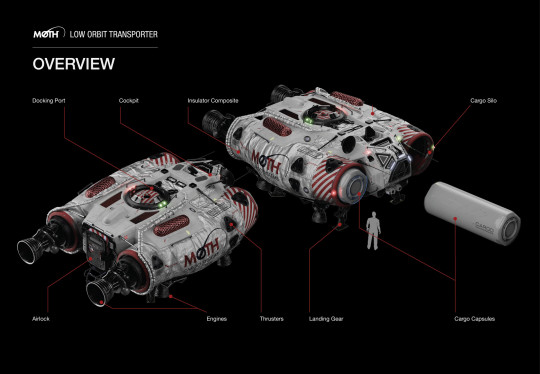






MOTH Lunar Orbit Transporter by Igor Sobolevsky
58 notes
·
View notes
Text

Spaceshiptember Day 9: Red
2 notes
·
View notes
Text
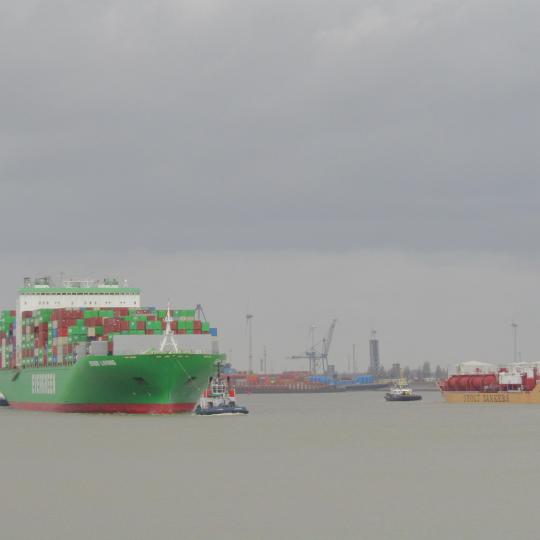
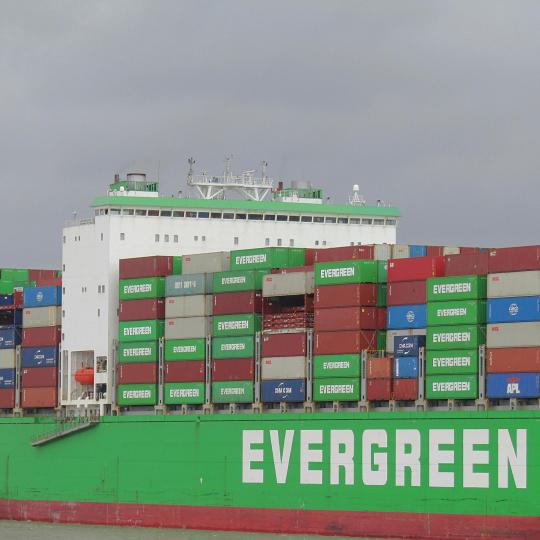
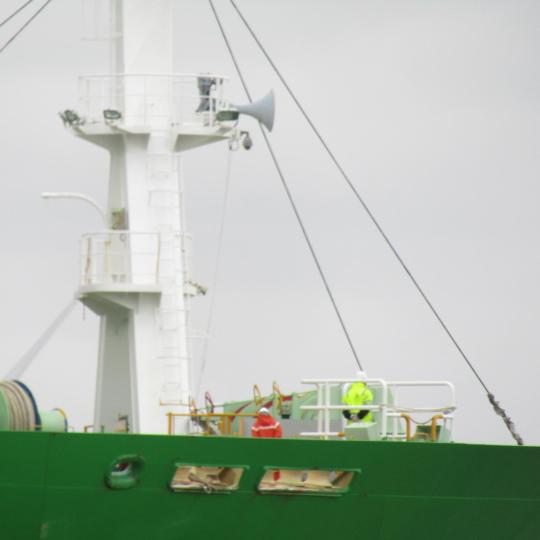
going into the Antwerp harbor
2 notes
·
View notes
Text


Idk what ur talking abt forkifold is literally canon I was on the stream where they got married /j
#unreality#in my HEAD theyre canonically married 💔#manifork#forkifold#(implied)#imo shes a silver jewlery type so thats how i imagine their rings#wedding rings are such an evilly cute concept. always carrying a part of each other#hers wrapped around her. his always being held in his hand by nature of being on it. its as if hes always holding her and shes always holdi#ng him even when theyre apart.#forkifold makes me wanna nonbinary jack truth because they r tender lesbians. butch jack can be real if you let him in your heart#objects with varied texture are so special to me so manifork with gems embedded and a leather grip wrapped around her handle is swag#i ❤️ objects i ❤️ cargoships i ❤️ jack manifold the invention of forkifold was a vital service to the Me community#whos the man! - art tag
11 notes
·
View notes
Text
Exploring Cargo Boat and Ship Versatility: From Small Cargo Ships to Cruise Ships for Sale

Introduction
Cargo ships and ships play an important part in global trade, transportation, and even leisure across the vast expanses of our oceans. These ships can range from small cargo ships to big container ships and even modified cruise ships for sale. This blog will delve into the world of cargo boats and ships, looking at their various varieties, purposes, and the critical roles they play in today's interconnected globe.
Cargo Ships and Cargo Boats: Navigating the Trade Seas
Cargo ships and cargo boats are at the center of international trade. These specialized vessels transport cargo, raw materials, and finished items over long distances, linking markets and ensuring the availability of critical supplies. Small cargo ships, sometimes known as cargo boats, are suited for traveling inland waterways, rivers, and minor ports. Their small size and dexterity enable them to reach areas inaccessible to larger vessels, facilitating trade in distant areas.
The Mighty Container Ships: Global Trade Giants
Container ships occupy center stage when it comes to the international transit of products. These enormous vessels are designed to transport standardized cargo containers, allowing for easy loading and unloading at ports across the world. Containerships are the lifeblood of global trade, delivering massive amounts of goods across continents. Their massive size and capacity make them perfect for large-scale cargo operations, saving economies all across the world.
Sailboats: Adventure and Nostalgia on the High Seas
Sailboats are frequently linked with recreational sailing and leisure activities, but they also play a role in freight delivery. Sail-powered cargo ships, which use wind power for propulsion, are an environmentally benign alternative to regular fossil-fueled vessels. These sustainable sailboats, despite their modest carrying capacity, help to reduce carbon emissions and highlight the possibility for environmentally responsible shipping operations.

Repurposing Cruise Ships: A New Lease on Life for Luxury Ships
In recent years, a novel trend in the maritime sector has emerged: the recycling of cruise ships for sale other applications. With the emergence of the COVID-19 epidemic, several cruise ships were rendered inoperable, resulting in an influx of cruiseships for sale. Some of these vessels have been converted into floating hotels, resorts, or even emergency floating hospitals. This novel technique demonstrates cruise ships' adaptability and versatility, opening up new options for the maritime industry.
Buying and Selling Vessels in the Boats and Ships Market
The global boat and ship market is diversified and dynamic. There are several possibilities for people wishing to buy or sell vessels, ranging from cargo ships to sailboats. Specialized platforms and brokers make the buying and selling of numerous types of boats possible, according to a variety of budgets and needs. Exploring the availability of small cargo ships or even cruise ships for sale gives exciting prospects in the marine industry for entrepreneurs looking for business chances.
Conclusion
Cargo ships and cargo boats are the backbone of global trade, ensuring the movement of products and materials across the world's oceans. Each vessel tracking, from small cargo ships navigating inland waterways to giant container ships connecting continents, plays an important part in the global supply chain. Sailboats and refurbished cruise ships have also found a place in the maritime landscape, providing environmentally friendly options and inventive solutions. Whether you're looking for a cargo ship or just curious in the wide world of boats for sale and ships, understanding the diversity of these vessels provides a glimpse into the interconnected nature of our modern world.
#cargoboat#cargoship#smallcargoship#sailboat#cargoships#containership#cruiseshipsforsale#boatsforsale
4 notes
·
View notes
Text
I'M SO SILLYYY I WAS TRYING TO FIGURE OUT AN OBJECTUM HEADCANON FOR JOE WRECKING MY MIND WHICH OBJECTS HE WOULD LIKE UNTIL I REALIZED HE'S LITERALLY SOOOOO CONCEPTUM FOR GREEN COLOR OMG.......
#ok luiger#the only problem now is how do i draw this#oh i have some ideas#but feel free to send in Joe x green I SUPPOSE#yes this is shippy but I feel like nobody has a problem with cargoships so whatever
6 notes
·
View notes
Text
From Point A to Point Anywhere! 🌍
Your cargo deserves a journey as seamless as your business. Whether it’s across town or across the globe, we’ve got the routes, the reliability, and the resources to get it there on time, every time

0 notes
Text
Demurrage in Maritime Law: A Comprehensive Analysis of Liability, Exceptions, and Mitigation
Maritime law is a complex field, replete with intricate rules and principles that govern the responsibilities and liabilities of parties involved in the chartering of vessels. Among these, demurrage stands out as a critical concept, often at the heart of disputes between shipowners and charterers. Understanding demurrage requires a deep dive into not just the basic definitions but also the nuanced legal precedents and specific examples that illustrate how this concept is applied in practice. This extended analysis aims to provide a thorough exploration of demurrage, drawing on case law, legal principles, and practical examples to offer a detailed understanding of this essential maritime term.
Demurrage refers to the compensation payable to a shipowner when a charterer exceeds the agreed laytime for loading or discharging cargo. Laytime is the period agreed upon in the charterparty (the contract between the shipowner and the charterer) during which the charterer must complete loading or discharging operations. When the charterer fails to complete these operations within the allotted time, they are said to have "gone on demurrage." At this point, the charterer becomes liable to pay the shipowner a pre-agreed daily rate as liquidated damages for the delay.
This liability is not merely a theoretical construct; it is a practical and enforceable obligation that has significant financial implications for the charterer. The rate of demurrage, typically specified in the charterparty, compensates the shipowner for the loss of use of their vessel. This compensation reflects not only the direct loss of income that the shipowner could have earned by chartering the vessel to another party during the period of delay but also the potential indirect losses, such as missed opportunities for subsequent charters.
Absolute Liability: The Charterer's Obligation
One of the fundamental aspects of demurrage is the concept of absolute liability. Once the charterer exceeds the agreed laytime, their liability to pay demurrage is automatic, regardless of the reasons for the delay. This principle was clearly articulated by Viscount Finlay in the case of William Alexander v. Akt. Hansa, where he stated:
"If the charterer has agreed to load or unload within a fixed period of time … he is answerable for the non-performance of that engagement, whatever the nature of the impediments, unless they are covered by exceptions in the charterparty or arise through the fault of the shipowner or those for whom he is responsible."
This statement underscores the strict nature of demurrage liability. The charterer cannot escape liability simply by pointing to difficulties or delays that were beyond their control. Unless these difficulties are specifically covered by exceptions in the charterparty, the charterer remains liable. This absolute liability is a cornerstone of the concept of demurrage, ensuring that shipowners are compensated for any delay that prevents them from using their vessel as intended.
The "Once on Demurrage, Always on Demurrage" Rule
A critical rule in the context of demurrage is the principle of "once on demurrage, always on demurrage." This rule dictates that once a vessel goes on demurrage, the obligation to pay continues uninterrupted until the cargo operations are completed. No subsequent events, such as bad weather, strikes, or other delays, can interrupt the accrual of demurrage unless the charterparty specifically states otherwise.
Lord Reid treated this proposition as correct, emphasizing that exceptions or interruptions do not prevent demurrage from accruing unless the charterparty explicitly states that they do. This rule likely owes its origin, at least in part, to the consideration that if the charterer had performed their undertaking to load or discharge within the agreed laytime, the vessel would not have been affected by subsequent delays during the demurrage period.
In the case of The Spalmatori, Lord Reid illustrated this principle in the context of a strike that occurred after the laytime had expired. The charterer argued that the strike, which was beyond their control, should excuse them from further liability for demurrage. However, Lord Reid rejected this argument, stating:
"I do not think it is an arbitrary rule for this reason. If a strike occurs before the end of the laytime neither party can be blamed in any way. But if it occurs after demurrage has begun to accrue the owner might well say: true, your breach of contract in detaining my ship after the end of the laytime did not cause the strike, but if you had fulfilled your contract the strike would have caused no loss because my ship would have been on the high seas before it began: so it is more reasonable that you should bear the loss than that I should."
This reasoning highlights the strict nature of the "once on demurrage, always on demurrage" rule. The charterer cannot evade liability by pointing to subsequent events that they argue would have caused the delay regardless of their breach. The key point is that the breach—exceeding the laytime—triggered the demurrage, and once triggered, the obligation to pay continues.
Exceptions Clauses: Limiting Liability for Demurrage
While the "once on demurrage, always on demurrage" rule is strict, charterers can negotiate exceptions clauses in their contracts to limit or exclude liability for demurrage under certain conditions. However, these clauses must be clearly and specifically worded. A general exceptions clause is typically insufficient to cover demurrage unless it expressly references it.
For example, in one case, an exceptions clause that did not explicitly refer to demurrage was held to apply to events after the laytime had been exceeded. This case underscores the importance of precise language in drafting exceptions clauses. Charterers must ensure that any exceptions they wish to apply to demurrage are unambiguously stated in the contract. Otherwise, the courts are likely to interpret the contract strictly, in line with the "once on demurrage, always on demurrage" rule.
The Impact of Shipowner Fault on Demurrage
Another critical aspect of demurrage is the impact of delays caused by the shipowner. Both laytime and demurrage can be affected by delays attributable to the shipowner or those acting on their behalf. If the shipowner's actions delay cargo operations but do not prevent the charterer from accessing the vessel or cargo, the charterer bears the burden of proving the extent of the delay caused by the shipowner's fault.
However, if the shipowner's conduct results in the charterer being deprived of the use of the vessel, the burden shifts to the shipowner to prove that no delay resulted from their actions. For example, if the shipowner uses the ship for purposes unrelated to the loading or discharging operations, such as using the vessel to transport goods for their own account, demurrage may not accrue for that period.
In Lyle Shipping Co. v. Cardiff Corporation, the court considered a situation where the discharge of cargo was delayed because the shipowner exercised a lien for demurrage at a previous port. The owner claimed damages for detention during the period when discharging had ceased. The court held that the owners were entitled to recover these damages because they had exercised the lien in a reasonable manner. Bigham J., in delivering the judgment, stated:
"This depends, in my opinion, upon whether they exercised their lien in a reasonable manner. If it was their correct course to keep the cargo on board the ship, rather than to warehouse it under the Merchant Shipping Act, then they acted reasonably in keeping it on board. If, on the other hand, it would have been cheaper to put the cargo into warehouse then they acted unreasonably in keeping it on board …"
This case illustrates that even when the shipowner is at fault, the reasonableness of their actions is a key consideration in determining whether demurrage continues to accrue. If the shipowner acts reasonably under the circumstances, they may still be entitled to demurrage or damages for detention.
Mitigation of Demurrage: A Limited Duty
While demurrage is typically considered liquidated damages, payable at a fixed rate per day or pro rata, the question of whether the shipowner has a duty to mitigate these damages can arise. Mitigation refers to the obligation to take reasonable steps to reduce losses. In the context of demurrage, this would mean that the shipowner should take steps to minimize the period during which demurrage accrues.
However, the general rule is that the shipowner is not under a duty to mitigate demurrage because the agreed rate per day will apply whatever the actual loss. The reasoning is that demurrage is liquidated damages, representing a pre-agreed estimate of the shipowner’s loss, and thus there is no obligation to reduce this loss.
Nevertheless, courts have recognized a limited duty to mitigate in certain circumstances. For example, if the shipowner could reasonably shorten the detention period by taking certain actions, such as agreeing to discharge the cargo in a different manner, they may be required to do so. This duty is not absolute but depends on the reasonableness of the actions required.
A classic example is the case where the discharge of cargo is delayed due to the exercise of a lien. While the lawful exercise of a lien does not automatically negate a claim for demurrage, if the lien is exercised unreasonably, the owner may be considered to have failed to mitigate damages. The case of Cape Wrath provides an illustrative example. Here, the owners delayed discharging the cargo because they were exercising a lien. The court found that the owners acted reasonably under the circumstances, given that warehousing the cargo would have incurred significant additional costs.
In some cases, the courts have even gone so far as to suggest that if the shipowner’s actions, though lawful, result in an unreasonable delay, they may not be entitled to claim demurrage for the period of the delay. This introduces a degree of flexibility into what is otherwise a strict area of law.
Demurrage and Damages for Detention
The distinction between demurrage and damages for detention is another important aspect of maritime law. Demurrage is typically limited to a specific period as defined in the charterparty. For example, the demurrage clause in the Gencon 1976 form limits the time on demurrage to ten running days. After this period, the owner is entitled to claim damages for detention, which are compensatory damages designed to cover actual losses beyond the agreed demurrage rate.
In contrast, the Gencon 1994 form removed the limitation on the number of demurrage days, allowing the demurrage rate to apply throughout the entire period of detention. This change reflects a shift towards a more straightforward application of demurrage, where the agreed rate applies until the completion of cargo operations, regardless of the duration.
However, the distinction between demurrage and damages for detention can still be relevant in cases where the delay extends beyond the period covered by demurrage. In such cases, the shipowner may be entitled to claim both demurrage and damages for detention, depending on the terms of the charterparty and the circumstances of the delay.
The case of Inverkip Steamship Co. v. Bunge is instructive in this regard. In this case, the charterer was liable for demurrage for a period beyond the laytime, but the owner also claimed damages for detention at large, arguing that the demurrage rate did not adequately compensate for the loss. The court rejected this argument, holding that the agreed demurrage rate applied without limit of time until the delay was such that it frustrated the contract or the owner treated the charterer as having repudiated the contract.
This case highlights the importance of understanding the specific terms of a charterparty and how they interact with the general principles of demurrage and detention. While demurrage is typically seen as a form of liquidated damages that applies automatically once the laytime is exceeded, the potential for additional claims, such as damages for detention, adds a layer of complexity that parties must navigate carefully.
American Law Perspective on Demurrage
In American maritime law, the principles governing demurrage are broadly similar to those in English law, with some key differences in interpretation and application. One of the most important principles is that once laytime expires, the charterer becomes liable for demurrage at the agreed daily rate for all additional time that the vessel is delayed. This rule is encapsulated in the phrase "once on demurrage, always on demurrage," which is strictly enforced in the U.S.
For example, in cases where a vessel arrives at a port on demurrage, the charterer cannot benefit from any "notice time" unless the charterparty explicitly states otherwise. This means that the charterer remains liable for demurrage even if subsequent events, such as bad weather or port congestion, delay the discharge of cargo.
In one notable American case, the court emphasized that all delays after the vessel went on demurrage, whether caused by the charterer's negligence or external factors like weather, should be counted as demurrage days. The principle here is clear: once the laytime has been exceeded and demurrage begins, nothing short of a clear contractual provision can interrupt the accrual of demurrage.
The Role of Exceptions in Demurrage Clauses
Exceptions clauses play a critical role in demurrage disputes, particularly when it comes to determining whether certain delays should count towards demurrage. In general, if an exceptions clause is to apply to time on demurrage, it must expressly stipulate this. A broadly worded exceptions clause that does not specifically reference demurrage is unlikely to be effective.
The rationale behind this strict approach is that demurrage is viewed as a form of liquidated damages, representing a pre-agreed estimate of the shipowner’s loss. As such, exceptions to the accrual of demurrage must be clearly articulated in the charterparty. The courts have consistently upheld this principle, reinforcing the need for precise and specific language in exceptions clauses.
For example, in a case involving the Centrocon Strike Clause, the court held that a strike occurring after the vessel had gone on demurrage did not excuse the charterer from paying demurrage, despite the fact that the strike was beyond the charterer's control. The court reasoned that the charterer had already breached the contract by exceeding the laytime, and therefore, the strike, which occurred after the breach, did not affect the charterer's liability for demurrage.
This case illustrates the importance of understanding the interplay between exceptions clauses and the general principles of demurrage. While exceptions clauses can provide some protection for charterers, they must be carefully drafted to ensure they apply to the specific circumstances of the case.
Practical Implications of Demurrage Clauses
The practical implications of demurrage clauses extend beyond the legal principles to the day-to-day operations of shipping companies and charterers. For shipowners, demurrage provides a crucial safeguard against the financial losses associated with delays in loading or discharging cargo. It ensures that they are compensated for the loss of use of their vessel, allowing them to recover some of the income they would have earned had the vessel been able to proceed on its voyage or be chartered to another party.
For charterers, on the other hand, demurrage represents a potential financial liability that must be carefully managed. The key to minimizing this liability lies in effective planning and coordination of loading and discharging operations. By ensuring that all necessary arrangements are in place before the vessel arrives, charterers can avoid delays that could trigger demurrage.
Moreover, charterers should pay close attention to the terms of the charterparty, particularly the laytime and demurrage provisions. Understanding the specific triggers for demurrage and the circumstances under which exceptions may apply is essential for avoiding unexpected costs. In some cases, it may be advisable for charterers to negotiate more favorable terms, such as longer laytime or lower demurrage rates, to reduce their exposure to demurrage.
For example, in The Sagatind case, the charterer failed to load a full and complete cargo within the agreed laytime, resulting in a reduced freight payment due to the vessel being loaded to its winter marks. The court held that the charterer was liable not only for the demurrage but also for the lost freight, emphasizing the potential financial consequences of failing to meet laytime obligations.
Conclusion: Navigating the Complexities of Demurrage
Demurrage is a complex and often contentious issue in maritime law, with significant financial implications for both shipowners and charterers. Understanding the principles that govern demurrage, including the concept of absolute liability, the "once on demurrage, always on demurrage" rule, and the role of exceptions clauses, is essential for anyone involved in the chartering of vessels.
By carefully drafting and negotiating charterparty terms, and by managing loading and discharging operations effectively, parties can minimize the risk of disputes and ensure that their interests are protected. Whether you are a shipowner seeking to enforce your right to demurrage or a charterer looking to avoid unnecessary costs, a thorough understanding of demurrage is crucial for success in the maritime industry.
As the cases discussed here illustrate, the courts take a strict approach to demurrage, often placing the burden of liability squarely on the charterer once laytime has been exceeded. However, there is also room for negotiation and flexibility, particularly when it comes to the drafting of exceptions clauses and the interpretation of specific contractual provisions. By taking a proactive approach to these issues, parties can avoid costly disputes and ensure that their maritime ventures run smoothly and profitably.
In conclusion, demurrage is not just a technical legal term but a critical component of maritime contracts that has real-world implications for the profitability and efficiency of shipping operations. By understanding the legal principles, case law, and practical considerations that govern demurrage, parties can navigate the complexities of this area of law with confidence and avoid the pitfalls that can lead to costly delays and disputes.
#MaritimeLaw#Demurrage#ShippingIndustry#CharterParty#VesselOperations#FreightManagement#CargoShipping#LegalInsights#ShippingContracts#MaritimeIndustry#Laytime#LegalLiability#Shipowners#Charterers#CargoOperations#MarineLogistics#ShippingFinance#LegalCompliance#MaritimeContracts#MarineLaw
0 notes
Text

3D Laser Engraved Container Ship inside Crystal Rectangle Cube
Recognize special employees in the logistics companies or shipping companies with this fantastic 3D Laser Crystal Container Ship Award. @creativecrystalawards supplying wide range or marine industry awards at reasonable price. https://creativecrystalawards.com/product/3d-laser-crystal-container-ship-model/
3d crystal container ship award
crystal ship award
3d engraved container ship inside crystal rectangle cube
3d laser engraved crystal award
3d crystal award
marine industry award
crystal cargo ship award
3d crystal rectangle cube award
3d crystal rectangle block award
corporate crystal awards supplier
#ship#cargoship#containership#3dcrystal#3d#crystalawards#award#awards#corporateawards#recognitionawards#creativecrystalawards#employeeawards
1 note
·
View note
Text
Cargo Ship That Hit Francis Scott Key Bridge Carried 1.8m Gallons of Fuel and 56 Containers With Hazardous Materials
1 note
·
View note
Text
youtube
Baltimore Maryland Francis Scott Key Bridge Collapses - Struck By Singapore Cargo Ship
Around 1:30 AM on March 26, 2024, a large cargo ship struck one of the support columns of the 1.6-mile-long Francis Scott Key Bridge, causing the bridge to collapse.
Several vehicles, including one as large as a tractor-trailer, were on the bridge at the time and plunged into the Patapsco River below.
Multiple people are unaccounted for as of now.
The cargo ship involved was the Singapore-flagged vessel Dali, which had just departed the Port of Baltimore when the incident occurred.
Maryland Governor Wes Moore has declared a state of emergency, and the Biden administration is working to deploy federal resources to assist with the response.
The Francis Scott Key Bridge is a vital artery for East Coast shipping, as it connects the Port of Baltimore to the surrounding highway network. The port handled over 84 million tons of cargo in 2023.
The collapse of this major bridge is expected to have significant impacts on transportation and commerce in the Baltimore region until repairs can be made.
#breakingnews#maryland#bridge#collapse#baltimore#keybridge#baltimorebridge#news#francisscottkeybridge#francisscottkey#cargoship#viral#trending#breaking#Patapsco#Patapscoriver#bglw#Youtube
0 notes
Link
Why Are Cargo Ships Carrying Electric Vehicles Frequently Catching Fire and Sinking? | CeBoz.com
A recent spate of incidents involving cargo ships transporting electric vehicles has raised serious concerns about the safety hazards and environmental impacts of this mode of transportation.
0 notes
Video
Olga Roemer : DICKERSON 8 YACHT by OLGA ROEMER a/k/a/ HELGA ROEMER
#cargoships#sailing#SAILINGVALHALLA#ValhallaSailing#ChesapeakeBay#Chesapeake#panama#PANAMACANAL#dickerson8#sailingboat#explorer#sailor#8#Dickerson#Spinsheet#USAA#america#regatta#RegattaUSA#SAILINGPANAMA#Pacific#AtlanticOcean#ATLANTICFITNESS#Atlantic#Carribean.Atlantic#olga-roemer#capitolhillolgaroemer#BOOK_OF_OLGA_ROEMER#facebookOlgaRoemer#filmstudioolgaroemer
0 notes
Text

Effortless Freight Forwarding Solutions by InstaDispatch
Experience streamlined and efficient freight forwarding with InstaDispatch. Simplify logistics, optimize shipments, and enhance your supply chain management.
#FreightForwarding#EfficientLogistics#SupplyChainManagement#LogisticsSolutions#OptimizeShipments#StreamlineOperations#FreightManagement#DeliveryAutomation#CargoShipping
0 notes
Text
ACare Logistics — Your Ultimate Freight Solution Provider.
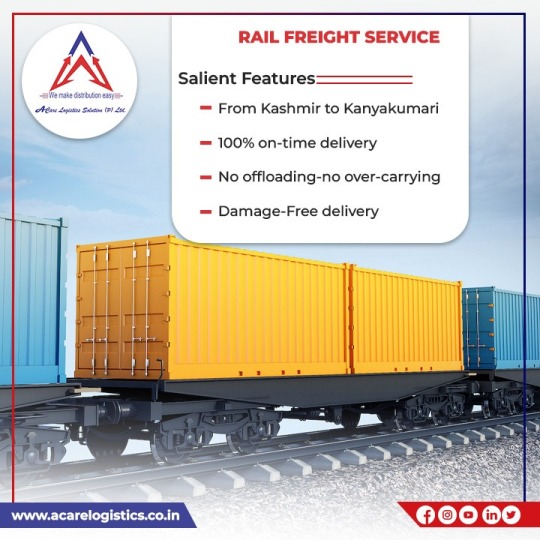
ACare Logistics - Your Ultimate Freight Solution Provider. We're here to make your cargo journeys smoother and more efficient. Join us on a track to success with our top-notch train freight services.
#ACareLogistics#TrainFreightServices#EfficientTransport#CargoShipping#RailwayLogistics#FreightSolutions#LogisticsPros#TrainCargo#LogisticsSimplified#CargoMovers#OnTrackSuccess#RailwayTransport#ShippingSolutions#FreightForwarding#EcoFriendlyLogistics#ReliableShipping#EfficientFreight#GreenLogistics#TrainsAndCargo#SustainableShipping#EcoFreight
1 note
·
View note
Text
Exploring the World of Cargo Ships and Sailboats: A Maritime Transport Journey
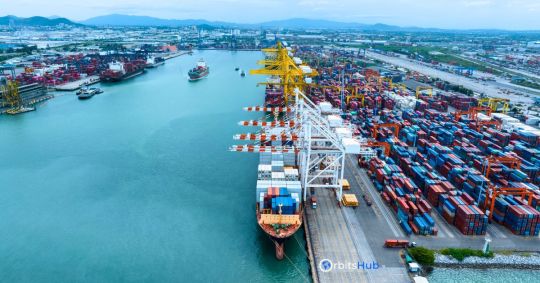
Introduction:
Cargo ships serve as the lifelines of worldwide commerce, and the maritime industry is critical to global trade and transportation. Each vessel, from massive container ships to tiny sailboats, serves a certain role and has a specific meaning. In this blog post, we'll take a look at the intriguing world of cargo boats and ships, which can range from big container ships to small cargo ships and even sailboats. So come along with me on this seafaring adventure!
Container Ships: Sea Monsters
Container ships are the indisputable champions of cargo transport. These massive ships can transport thousands of standard-sized cargo containers, allowing for the efficient transportation of commodities across continents. Container ships, with their enormous size and innovative logistical systems, have changed the global economy, facilitating international trade on an unprecedented scale. Container ships ensure that items reach their destinations in a timely and cost-effective way, from consumer goods to raw minerals.
Small Cargo Ships: A Versatile Alternative
While container ships dominate the maritime commercial scene, small cargo ships, particularly in coastal and inland seas, play an important role in moving products. These vessels are built for versatility, allowing them to navigate through smaller ports and rivers that larger vessels cannot. Small cargo ships serve a variety of sectors, including fishing, local transportation, and even tourism. They offer a cost-effective and dependable method of delivering commodities within certain regions, hence sustaining local economies and trade networks.
Sailboats: Harnessing Wind Power
Sailboats provide a unique and environmentally beneficial alternative to motorized freight vehicles. Sailboats, which are propelled by wind energy, have a long history that precedes contemporary trade. While sailboats are not typically utilized for large-scale cargo transportation, they are frequently employed for smaller-scale deliveries, island hopping, and adventure tourism. Their exquisite aesthetics and emphasis on natural components inspire a sense of nostalgia and romance, enticing sailing aficionados.

Environmental Concerns and Cargo Ships
As we go deeper into the world of cargo ships, it is critical to consider the environmental impact of these vessels. While container ships are a cost-effective way to move products, they also contribute to greenhouse gas emissions and pollution. To address these problems, the industry is looking into a variety of options, such as the use of alternative fuels, new hull designs, and increased operational efficiency. To assure a cleaner future for global trade, the maritime industry must emphasize sustainability and reduce its ecological imprint.
Experiencing New Horizons: Cruise Ships and Boats for Sale
Aside from freight transport, the marine business includes a diverse range of vessels, such as cruise ships for sale and other watercraft. There has been an upsurge in interest in the sale and repurposing of cruise ships in recent years, providing chances for entrepreneurs and investors to enter the tourist and hospitality sectors. Furthermore, the boat sector, which includes anything from personal watercraft to luxury yachts, is thriving, catering to people's recreational and leisure requirements.
Conclusion:
The cargo ship and sailboat sector is extensive and diverse, involving vessels of all shapes and sizes, each having a distinct purpose in the marine industry. These vessels represent the backbone of global trade, transport, and exploration, from the gigantic container ships that connect continents to the agile tiny cargo ships that navigate coastal waters and the wind-powered sailboats that evoke a sense of adventure. As the industry evolves, it is critical to strike a balance between economic growth and environmental sustainability in order to ensure a bright future for maritime transportation. So, whether you're captivated by massive container ships or enamored by the appeal of sail boats for sale, the world of maritime transport offers an enthralling voyage for those who embark on it.
#cargoboat#cargoship#smallcargoship#sailboat#cargoships#containership#cruiseshipsforsale#boatsforsale
4 notes
·
View notes